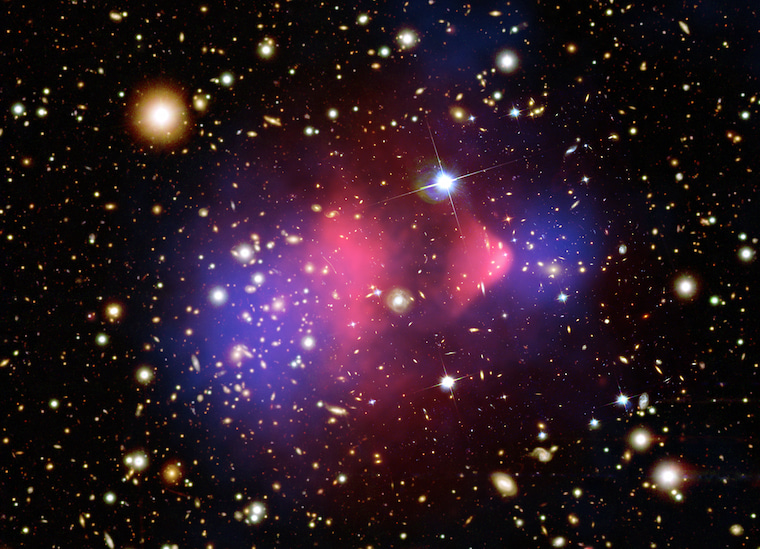Bullet Cluster

Discovered in 2004 by Clowe, Gonzalez and Markevitch1, the Bullet Cluster provided the first empirical evidence for the existence of dark matter. Depicting the collision of two galaxy clusters frozen in time, it shows most of the galaxies and stars having flown past each other during a first (or subsequent) pass, and all the electromagnetically-interacting gas slowed down and accrued in the middle (the red glow).
Using gravitational lensing data from background galaxies, the researchers were able to create a map of where the matter was concentrated in these colliding clusters. Even though most of the “baryonic” (or regular) matter was concentrated in the colliding gases in the middle, which typically heats up significantly and emits X-rays during these collisions, the matter heat map showed a significant amount of lensing due to the matter present near the galaxies, which themselves are supposed to contribute only a small fraction of the mass when compared to the colliding gases. The only explanation was the presence of dark matter alongside these galaxies, which did not slow down during the collision and moved past each other, providing credence to the assumption that dark matter only interacts with itself and other matter through gravity. 2
Note that in this image, the X-rays (pink glow) were superimposed with visible light (the yellow galaxies) along with matter distribution calculated from gravitation lensing (shown in blue).3
Further Reading
- NASA has a more comprehensive article about the Bullet Cluster and its significance in proving the existence dark matter.
- Becky Smethurst has an excellent video about the history of scientific literature about dark matter where she briefly touches on the Bullet Cluster.